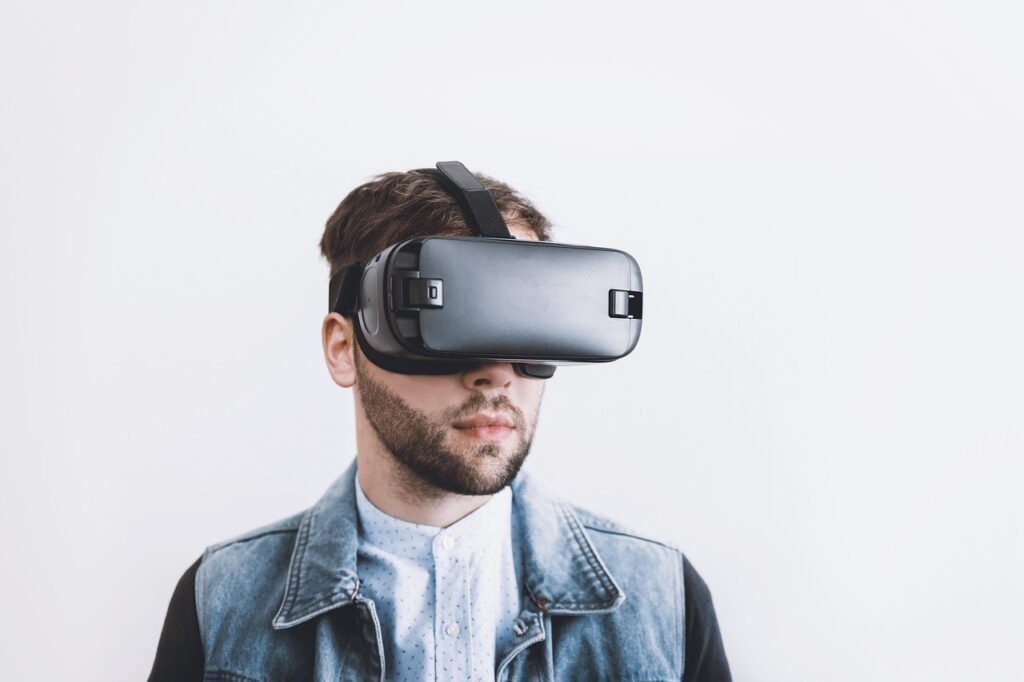The boundary between biology and technology is dissolving. In 2025, biohacking is no longer confined to fringe movements or underground labs. It’s an emerging field accelerated by AI, wearable tech, and neural interfaces—with mainstream adoption reshaping how we enhance cognitive performance, monitor health, and even modify human capabilities.
At the intersection of AI and human physiology, this new era of AI-powered biohacking is redefining what it means to be human. From smartwatches that detect stress before it peaks to brain-computer interfaces (BCIs) enabling direct thought-to-text communication, this is not science fiction—it’s the frontier of real-time, AI-enhanced biology.
What Is Biohacking?
Biohacking, also known as DIY biology, refers to the practice of optimizing one’s body and mind through science, tech, and self-experimentation. It spans from nutrigenomics and supplement stacking, to implantable chips and neurostimulation.
When combined with artificial intelligence, biohacking becomes predictive, personalized, and autonomous—enabling systems that learn your biology and proactively enhance it.
The Convergence of AI and Biohacking
AI amplifies biohacking in three key ways:
- Real-Time Data Analysis
- AI can detect patterns across continuous streams of biometric data—heart rate, HRV, skin temperature, glucose levels—delivering insights that are impossible for humans to manually analyze.
- Personalized Optimization
- Machine learning models adjust diets, sleep cycles, and workout routines based on how your body responds, not based on generalized population averages.
- Neural Interface Interpretation
- AI translates noisy brainwave signals into structured commands, making thought-controlled computing increasingly viable.
Breakthroughs in Wearable AI Biohacking (2023–2025)
🧠 Neural Interfaces
Companies like Neuralink, NextMind, and Blackrock Neurotech are developing brain-computer interfaces (BCIs) that allow the brain to communicate directly with digital systems.
- Use Case: Thought-to-text communication for ALS patients.
- AI Role: Neural decoding models use deep learning to map EEG/EMG signals to language or motor functions.
🩺 Continuous Health Monitoring
Advanced AI-powered wearables go beyond step tracking. They now detect early arrhythmias, sleep apnea, insulin resistance, and even mental health anomalies.
- Example: WHOOP 4.0 uses AI to analyze HRV, respiratory rate, and sleep cycles to optimize athletic recovery and prevent overtraining.
- Example: Ultrahuman Ring AIR provides metabolic insights using AI-driven interpretations of glucose, cortisol, and other biomarkers.
⚡ Bioelectric Stimulation
AI-optimized neuromodulation devices like Apollo Neuro or NeuroSky use vibrational and electrical stimulation to enhance focus, sleep, or relaxation based on biometric state.
- AI models personalize signal intensity and timing in real time based on physiological feedback.
The Role of AI in Genetic and Metabolic Biohacking
AI is increasingly central to the future of precision biology. Here’s how:
- Nutrigenomics Optimization: Tools like InsideTracker and Zoe use AI to recommend food based on real-time blood/glucose responses and genetic makeup.
- AI Drug Discovery & Supplement Stacking: Startups such as BioAge Labs and AI Vali use generative models to discover biohacking molecules for longevity, mitochondrial efficiency, and muscle preservation.
Neurofeedback and Cognitive Enhancement
AI-powered EEG headsets—like those by Muse, Kernel, and Emotiv—offer real-time neurofeedback by analyzing brainwaves and providing adaptive stimuli for:
- Focus enhancement
- Anxiety reduction
- Creative flow state activation
These systems improve over time by learning each user’s neural baseline and adjusting their feedback protocols, often leading to measurable increases in mental clarity, memory retention, and stress resilience.
Ethical and Privacy Concerns
As with all high-tech biological interventions, there are serious questions around:
- Data sovereignty: Who owns your neural or biometric data?
- Bio-surveillance: Will employers or governments use wearables to monitor citizens?
- Accessibility: Will biohacking only be available to the wealthy elite?
Regulatory bodies like the FDA, EU MDR, and WHO Digital Health Guidelines are starting to assess wearable and neural tech more seriously—but global standards for AI bio-integration remain fragmented.
Global Adoption and Market Trends
According to a 2025 report by CB Insights, the biohacking market—driven by AI-wearable integration—is projected to grow from $26 billion in 2023 to $61 billion by 2028. Key sectors include:
| Sector | Examples |
|---|---|
| Fitness/Performance | WHOOP, Garmin AI Coach, Levels |
| Mental Health | Brain.fm, AI-guided neurotherapy |
| Longevity | AI supplement stacks, genetic optimization |
| Accessibility | BCIs for paralysis, hearing enhancement |
The Future of AI Biohacking: Human 2.0
Looking ahead, we may soon see:
- Fully autonomous health systems that adjust diet, meds, and routines without user input.
- Neural AI assistants trained on a user’s brain data to act as cognitive co-pilots.
- Synthetic biology platforms that allow users to reprogram gut microbiomes and gene expression with AI-curated precision.
Conclusion
AI-powered biohacking marks a paradigm shift in how humans interact with their own biology. It’s not about becoming cyborgs—it’s about augmenting natural systems with intelligent insights to enhance quality of life, cognition, and longevity.
While ethical frameworks and accessibility challenges remain, the integration of AI with biology opens the door to a world where peak human performance is no longer a myth, but a measurable, optimizable, and democratized reality. In the years ahead, the human body will be as programmable as a smartphone—and AI will be the operating system behind it.
